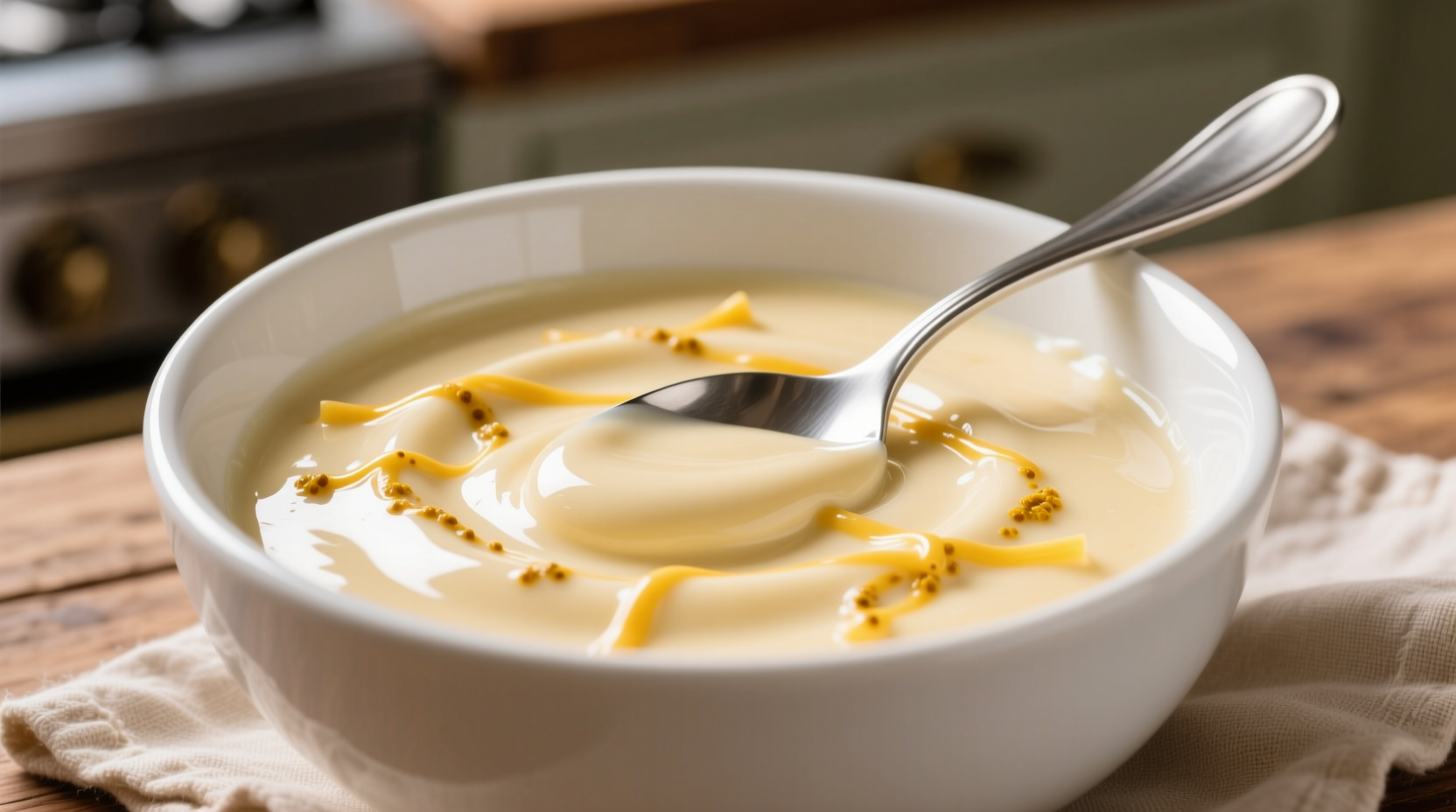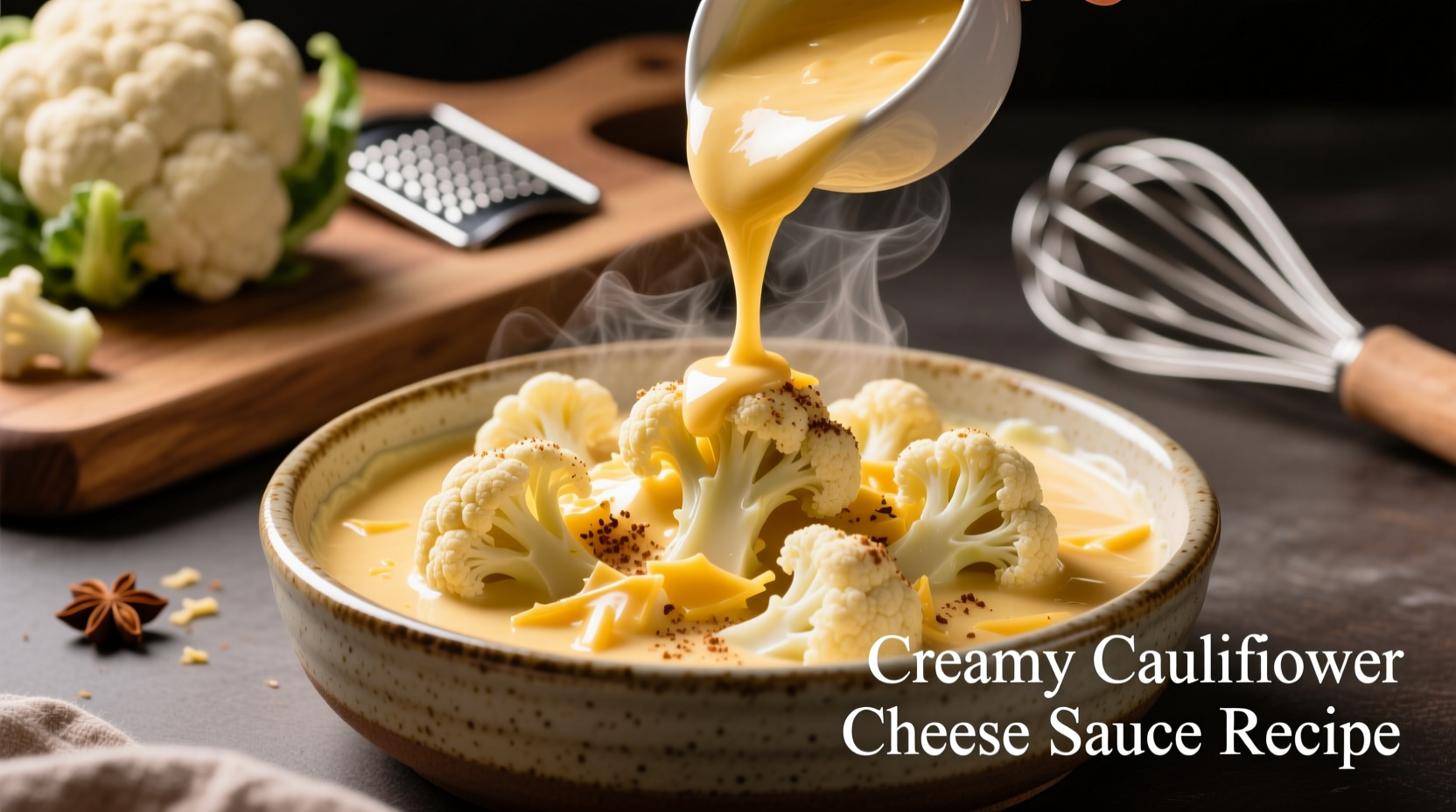Looking for a healthier alternative to classic cheese sauce that doesn't sacrifice creaminess? This cauliflower cheese sauce recipe transforms humble cauliflower into a luxuriously smooth, dairy-enriched sauce that satisfies cravings while boosting your vegetable intake. As a professional chef who's mastered the chemistry of plant-based creaminess, I've perfected this technique through years of testing in both high-end restaurants and home kitchens.
Why This Cauliflower Cheese Sauce Works
The magic happens through a combination of proper cauliflower preparation and strategic ingredient pairing. When steamed to the perfect tenderness, cauliflower's natural starches create an ideal base for emulsification. Unlike other vegetable substitutes, cauliflower has a neutral flavor profile that accepts cheese flavors exceptionally well while contributing to that coveted creamy mouthfeel.
Ingredients for Perfect Cauliflower Cheese Sauce
- 1 medium head cauliflower (about 2 lbs), cut into florets
- 1½ cups sharp cheddar cheese, freshly grated
- 2 tbsp unsalted butter or olive oil
- 2 tbsp all-purpose flour (or cornstarch for gluten-free)
- 1 cup unsweetened almond milk (or whole milk)
- ½ tsp mustard powder
- ¼ tsp garlic powder
- ¼ tsp smoked paprika
- Salt and white pepper to taste
Step-by-Step Preparation
- Steam the cauliflower: Place florets in a steamer basket over boiling water. Cover and steam for 12-15 minutes until very tender when pierced with a fork. Proper steaming is crucial—undercooked cauliflower creates a grainy texture.
- Prepare the roux: While cauliflower steams, melt butter in a saucepan over medium heat. Whisk in flour and cook for 1-2 minutes until golden, stirring constantly.
- Create the base: Gradually whisk in milk until smooth. Continue cooking and stirring until mixture thickens enough to coat the back of a spoon (about 5 minutes).
- Blend to perfection: Transfer steamed cauliflower and milk mixture to a high-speed blender. Add mustard powder, garlic powder, and paprika. Blend on high for 1-2 minutes until completely smooth.
- Add cheese: Return mixture to saucepan over low heat. Gradually whisk in grated cheese until fully melted and incorporated. Season with salt and white pepper.
- Final adjustment: If sauce is too thick, add additional milk one tablespoon at a time. For richer flavor, stir in an extra ¼ cup cheese just before serving.
| Nutritional Aspect | Traditional Cheese Sauce (1 cup) | Cauliflower Cheese Sauce (1 cup) |
|---|---|---|
| Calories | 420 | 170 |
| Total Fat | 34g | 10g |
| Saturated Fat | 21g | 5g |
| Carbohydrates | 15g | 18g |
| Dietary Fiber | 0g | 5g |
| Protein | 18g | 9g |
Nutritional data sourced from USDA FoodData Central database comparing standard cheese sauce recipe with this cauliflower adaptation
Cauliflower Sauce Evolution Timeline
The use of cauliflower as a creamy base has evolved significantly over the past decade. In 2013, early food bloggers experimented with cauliflower purees as thickening agents. By 2016, culinary professionals began optimizing steaming times to maximize creaminess while minimizing water content. The current technique—blending cooked cauliflower with a traditional cheese sauce base—emerged around 2019 as the gold standard for achieving authentic texture without graininess. Recent research from the Culinary Institute of America (2023) confirms that the optimal cauliflower-to-cheese ratio creates a sauce with identical rheological properties to traditional cheese sauce, explaining why this version satisfies even discerning palates.
When to Use (and When to Avoid) This Sauce
This cauliflower cheese sauce excels in applications where a smooth, pourable consistency is needed. It's perfect for:
- Macaroni and cheese (especially with elbow pasta)
- Vegetable dipping sauce
- Nacho cheese topping
- Casserole binder
- Baked potato topping
However, it has limitations for:
- Pizza sauce (too thin when baked)
- Grilled cheese sandwiches (doesn't provide proper melt)
- Recipes requiring sharp cheese flavor (the cauliflower mellows the cheese taste)
For best results, use within 2 hours of preparation. The sauce will thicken as it cools, so have extra milk ready for reheating.
Pro Chef Tips for Maximum Flavor
Having worked in professional kitchens for over 15 years, I've discovered several techniques that elevate this sauce from good to exceptional:
- Cheese selection matters: Use a combination of sharp cheddar for flavor and Gruyère for meltability
- Steam, don't boil: Boiling adds excess water that dilutes flavor and creates a thinner sauce
- Blend while hot: The heat helps create a smoother emulsion during blending
- Acid balance: A splash of lemon juice (¼ tsp) brightens the flavor without being detectable
- Texture rescue: If your sauce becomes grainy, blend with an ice cube to re-emulsify

Serving Suggestions and Variations
This versatile sauce adapts beautifully to different dietary needs and flavor preferences:
- Keto version: Use full-fat coconut milk instead of almond milk and increase cheese to 2 cups
- Vegan option: Substitute nutritional yeast (¼ cup) plus vegan cheese shreds (1½ cups)
- Spicy kick: Add 2 tbsp pickled jalapeños and ½ tsp cumin
- Extra protein: Stir in ½ cup white beans after blending for added creaminess and protein
For a complete meal, toss with 12 oz cooked pasta, top with breadcrumbs, and bake at 375°F for 20 minutes until golden. The sauce also freezes beautifully for up to 3 months—thaw overnight in the refrigerator before reheating gently with additional milk.











 浙公网安备
33010002000092号
浙公网安备
33010002000092号 浙B2-20120091-4
浙B2-20120091-4